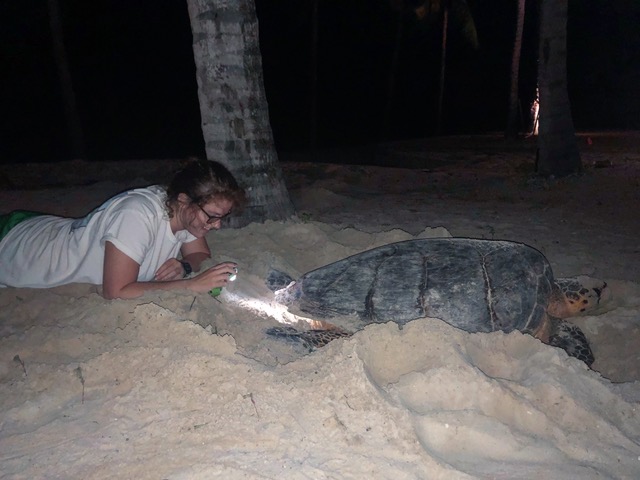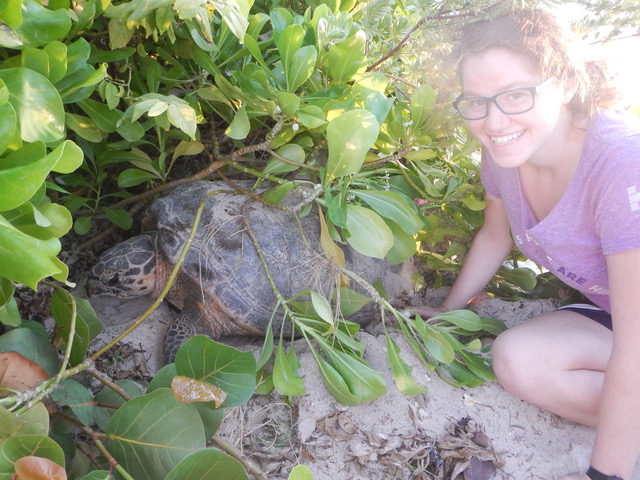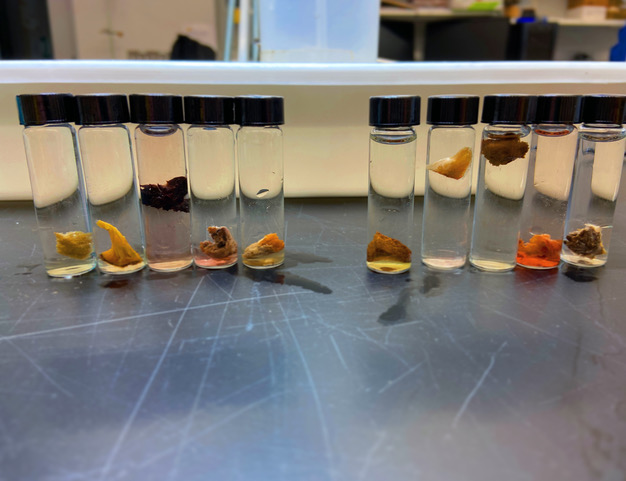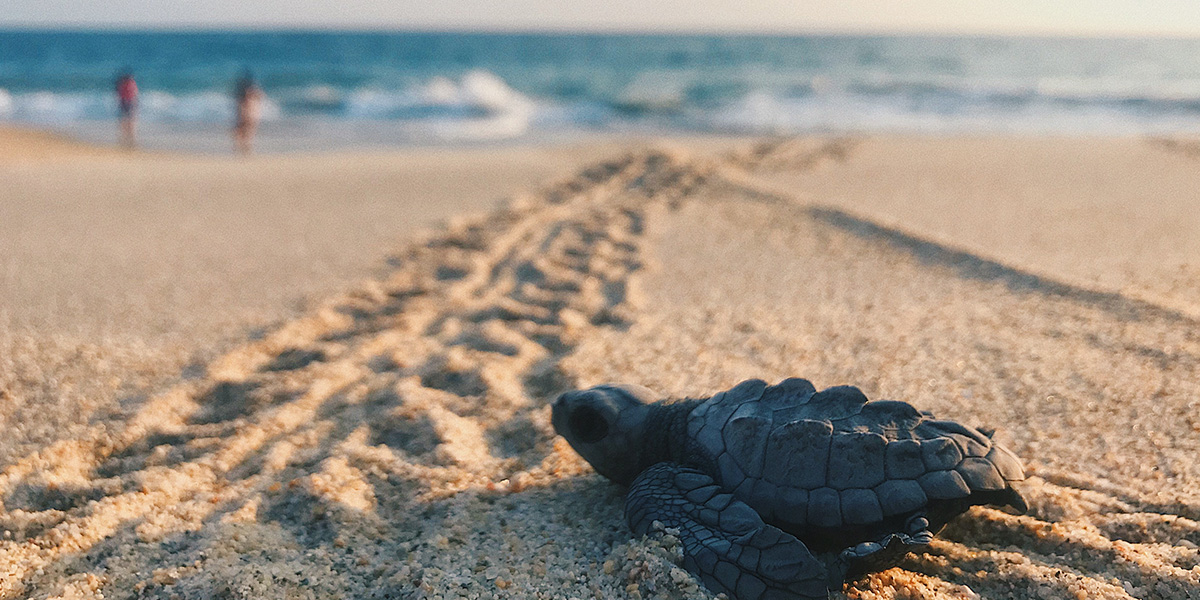Every year, the Boyd Lyon Sea Turtle Fund hosts a scholarship for a marine biology student whose research is focused on sea turtles. This year’s winner is Alexandra Fireman. Below is her project summary.
The Jumby Bay Hawksbill Project (JBHP) has been monitoring nesting hawksbill sea turtles on Long Island, Antigua since 1987.
The hawksbill population in Antigua exhibited long-term growth from 1987-2015. But, annual nesting numbers have markedly declined in recent years. As such, there is an immediate need to assess causes of this decline, such as degradation of foraging habitat. Hawksbills forage in coral reef ecosystems and are considered keystone species because their decline has deleterious effects on reef ecosystems. Understanding the hawksbill’s role in their environment is critical for conservation of their species. And, of coral reef ecosystems as a whole.

Studying the foraging ecology of a long-lived marine species requires innovative techniques.
Stable isotope analysis of inert and metabolically active tissues has been used across taxa to understand the diets of organisms. In particular, δ13C and δ15N values have been widely used to predict location of foraging and trophic level of the marine consumers. While isotope applications with sea turtles have recently proliferated, isotope studies of hawksbills are less common. And, time-series analysis of Caribbean hawksbill keratin isotope composition is mainly absent from the literature. The archive of trophic history stored in carapace keratin could provide a powerful method for evaluating resource use by hawksbills in reef ecosystems. Using stable isotope analysis of hawksbill scute tissue and prey items (Porifera – sea sponges) from a known foraging ground, I will be assessing resource use patterns of the Long Island hawksbill population.

I will analyze collected scute samples to obtain a complete isotopic record of keratin tissue, for a subset of the Long Island population. Sponge stable isotope values will allow for exploration of a trophic enrichment factor (the difference between the isotopic value of a predator and its prey) for the hawksbills assessed. I will also be leveraging long-term reproductive data and tracked foraging area information. This will help identify the most productive and vulnerable hawksbill habitats and support increased protection efforts for these marine areas.

Learn More:
Find out more about the Boyd Lyon Sea Turtle Fund here.







